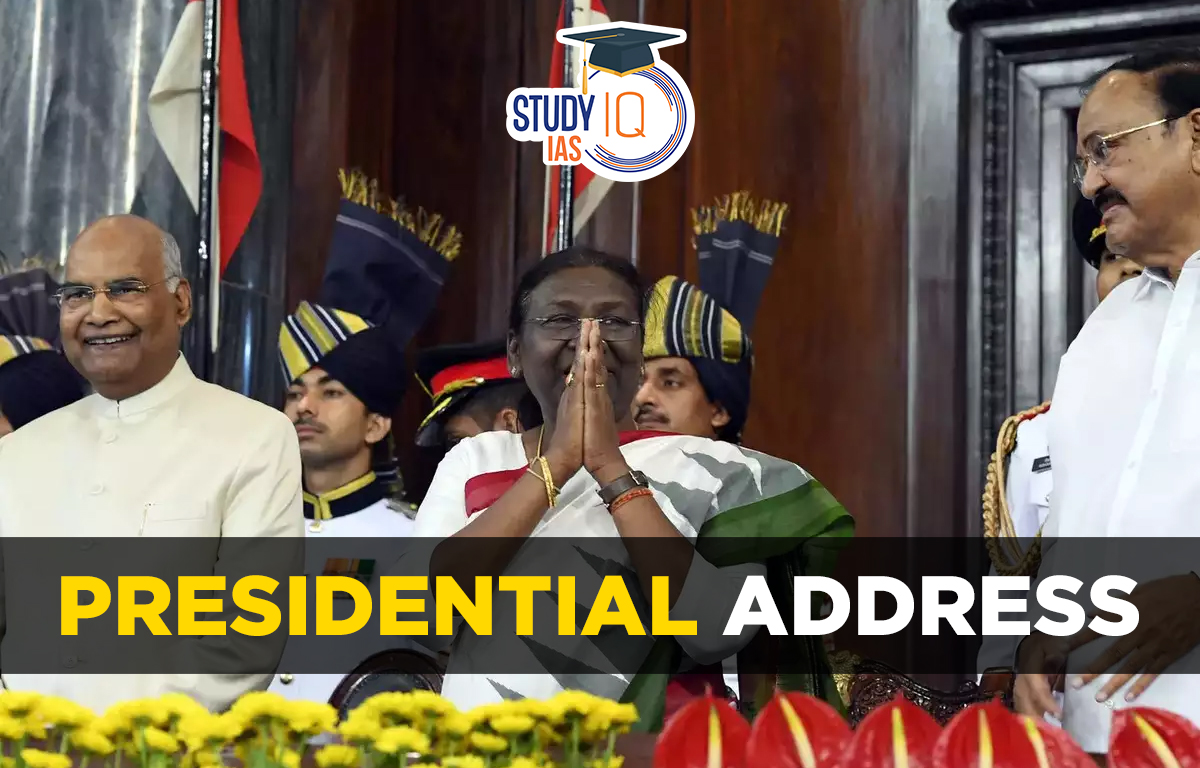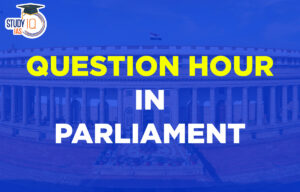Table of Contents
In News: President of India addressed the joint sitting of Parliament for the first time after assuming the position.
History of Presidential Address
- Pre-Independence:
- The practice of such an address was inspired from the United Kingdom, where the monarch addresses the Parliament.
- The practice of the President addressing Parliament in India was established after the promulgation of the Government of India Act in 1919.
- This law gave the Governor-General the right of addressing the Legislative Assembly and the Council of State.
- Though the law did not have a provision for a joint address, the Governor-General did address the Assembly and the Council together on multiple occasions.
- Post-Independence:
- There was no joint address to the Constituent Assembly (Legislative) between 1947 and 1950.
- After the constitution came into force, President Rajendra Prasad addressed members of Lok Sabha and Rajya Sabha for the first time on January 31, 1950.
- The President was required to address each session of Parliament. In 1951, the First Amendment to the Constitution made the President’s address an annual affair.
Constitutional Provisions
- The Constitution of India gives the President and the Governor the power to address a sitting of the legislature.
- Under Article 87, there are two special occasions on which the President (or the Governor) addresses a joint sitting:
- To address the opening session of a new legislature after a general election
- To address the first sitting of Parliament (or legislative assembly) each year
- A session of a new or continuing legislature cannot start without fulfilling this requirement.
What does the President’s Address Contain?
- The address by the President serves as a platform for the government to make policy and legislative announcements.
- The address follows a general structure which highlights the government’s accomplishments from the previous year and sets the broad governance agenda for the upcoming year.
- The speech of the President is based on the government’s viewpoints and is also written by it.
- Content: All the ministries are asked to send their input for the speech. Ministries can also give specific legislative proposals that need to be considered in the President’s address.
- The provided information is collated and shaped into a speech, which is then delivered to the President.
- Divergence from the Tradition:
- The President (or the Governor) is obliged to perform the constitutional duty of delivering an address to the legislature.
- However, there are instances when Governors deviate from the text of the speech prepared by the government. Till now, no President has deviated from the text of the speech.
Post President’s Address
- After the address, both houses of the Parliament move a motion to thank the President for his/her speech.
- MPs are then provided an opportunity to debate and raise concerns on certain issues. These concerns are then addressed by the Prime Minister, who also replies to the motion of thanks.
- The motion is then put to vote and MPs can express their disagreement on the motion by moving amendments to the motion.
- Failure of Motion of Thanks: The Motion of Thanks must be passed in the House. Otherwise, it amounts to the defeat of the government.
- It is one of the ways through which the Lok Sabha can also express a lack of confidence in the government.


 Question Hour in Parliament: Meaning, Ty...
Question Hour in Parliament: Meaning, Ty...
 Daily Quiz 18 July 2025
Daily Quiz 18 July 2025





















